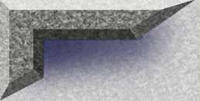1 April 2004
Dogs Really Do Look Like Their Owners

After years of speculation, a new study says that dogs really do resemble their owners. At least this is the
case with purebred canines, according to research from the University of California by Nicholas Christenfeld and Michael Roy.
The full study, Do Dogs Resemble Their Owners?, appears in the journal Psychological Science.
The UCSD psychologists found that when people pick a dog, "they seek
one that, at some level, resembles them, and, when they get a purebred, they get what they want."
Forty-five dogs and their owners were separately photographed and
judges were shown pictures of an owner, that owner's dog, and one other dog, with the task of picking out the true match.
The proof of resemblance was that a majority of the purebred dogs and their owners could be identified by the 28 judges called
upon to examine the photographs, with the results showing 16 matches out of the 25 purebreds. There was no evidence of resemblance
between the mixed breed dogs and their owners.
"This is a project in which I've been interested for a long time because
you hear a lot of casual talk about dog-owner resemblance and we wanted to see what could be learned by formal research,"
said Professor Christenfeld. Once the researchers were able to confirm, with randomized photo matching techniques, the high
incidence of resemblance between owners and purebreds, and none for mixed-breeds, they went on to conclude that the similarity
was due to owner selection at time of acquisition.
Resemblance only among the pure-breeds and their owners ruled out
another possible explanation, that of convergence--the theory that similarity might grow with duration of ownership. Not only
was there no correlation between how long a dog and owner had been together, as to similarity in appearance, but for convergence
to be applicable the mixed-breeds would also have a resemblance to their owners. Since the similarity was only among pure-breeds,
whose future appearance could be predicted, the study concluded that, in a majority of cases, owners select dogs who resemble
themselves.
To examine whether people do look like their pets, and to explore
the underlying mechanism, the researchers asked 28 judges (undergraduate college students) to examine photos of 45 dogs and
their owners, taken at three dogs parks. Owners were approached at random and asked to help with a psychology experiment.
The pictures were taken so that the background was different for dog and owners. Triads of pictures were constructed with
one owner, that owner's dog and one other dog. A dog was regarded as resembling its owner if a majority of judges (more than
14) matched the pair.
The findings do not reveal at what level the resemblance between person
and pet exists. It could be a similarity of physical attributes or of personality traits. The matches seem to be based less
on specific obvious characteristics-the connections were not, for example, between hairy people and hairy dogs or big people
with big dogs. The data does not reveal how judges were able match dogs to their owners, but the study concludes, "it does
appear that people want a creature like themselves."

